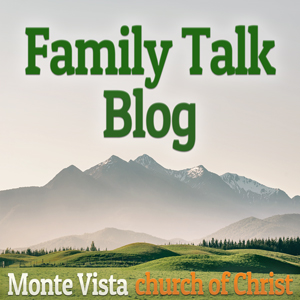What We Believe — Scripture
The New Testament Gnostics were an early sect, firmly linked with mysticism and mystery religions, in parts of the Roman empire from the first and second centuries, surviving but diminishing in influence until the twelfth century. They were highly concerned with secret, mysterious interpretations of various works, including the teachings of Jesus. They frequently treated literal content as symbolic representation, with a meaning different from, or added to, the literal. The New Testament text easily refutes this type of material.
The Gospel of Mary is one of four Gnostic texts discovered in 1896 in a 5th-century papyrus codex written in Sahidic Coptic. It was purchased in Cairo by German diplomat Dr. Carl Reinhard and is known as the Akhmim Codex. The Mary text is not considered a gospel by some scholars who restrict the term gospel to texts focused on relating the teachings or activities of Jesus during his adult life. This papyrus copy is missing the first six and other pages. Two other portions have been found in other places but are fragments of a page, and one of them is only one-inch square. The available text begins with a partial question. “…will, then, matter be saved or not?.”
The answer is attributed to Jesus. “All natures, all formed things, all creatures exist in and with one another and will again be resolved into their own roots, because the nature of matter is dissolved into the roots of its nature alone.” As a cryptic saying that matter will continue renewing itself, this matches Gnostic reasoning. It corresponds to writings that defined the concepts of reincarnation between 500 and 400 B.C.E. However, it differs from scripture, “But the day of the Lord will come like a thief, in which the heavens will pass away with a roar and the elements will be destroyed with intense heat, and the earth and its works will be burned up“ (2 Peter 3:10). This difference alone should cause everyone to reject the Mary text.
Pages 11 – 14 are missing from the document. Then after a few lines, we read this description of a soul’s journey after death and the challenges it overcomes. “When the soul had overcome the third power, it went upwards and saw the fourth power, (which) took seven forms. The first form is darkness, the second desire, the third ignorance, the fourth is the excitement of death, the fifth is the kingdom of the flesh, the sixth is the foolish wisdom of flesh, the seventh is the wrathful wisdom. These are the seven {powers} of wrath.” This cryptic section reads like the Tibetan Book of the Dead, the Egyptian Book of the Dead, or a work of fiction composed by Dante Alighieri, a 13-14th century novelist. These idolatrous funeral texts describe the experiences of the consciousness after death, some leading to torment, others determining the state of the soul’s reincarnation. Compare them to (1 Thessalonians 4:13-18).
The passage continues until we come to this section. “When Mary had said this, she was silent since the Savior had spoken thus far with her. But Andrew answered, “…I do not believe that the Savior said this. For certainly these teachings are of other ideas.” Peter also opposed her in regard to these matters and asked them about the Savior. “Did he then speak secretly with a woman, in preference to us, and not openly? Are we to turn back and all listen to her? Did he prefer her to us?” “Then Mary grieved and said to Peter, “My brother Peter, what do you think? Do you think that I thought this up myself in my heart or that I am lying concerning the Savior?” “Levi answered and said to Peter, “Peter, you are always irate. Now I see that you are contending against the woman like the adversaries. But if the Savior made her worthy, who are you to reject her? Surely the Savior knew her very well. For this reason he loved her more than us. And we should rather be ashamed and put on the Perfect Man, to form us as he commanded us, and proclaim the gospel, without publishing a further commandment or a further law than the one which the Savior spoke. “When Levi had said this, they began to go out in order to proclaim him and preach him.” This final sentence is used by some today to indicate that Mary Magdalene, as the first apostle, convinced the men to go and preach!
The New Testament authorized two categories of apostleship, limited and global. Jesus gave a limited commission to 12 and later to seventy disciples (Mark 6:7-13; Luke 10:1-12), sending them only to the Jews. If Mary was commissioned as an apostle, she was limited to the news of Jesus’ resurrection and sent only to His local disciples: It lasted for only a few minutes. Today there are societies dedicated to recognizing Mary Magdalene as the primary apostle. They claim that she was, in effect, responsible for the news of the resurrection spreading to the world. But, Jesus told the chosen men that the Holy Spirit would lead them in proclaiming the entire gospel. (John 16:12-15; Acts 1:4-5).
Do you believe the Holy Spirit speaks to us today through the writings contained in our Bible?
